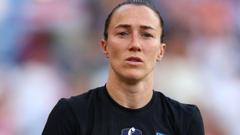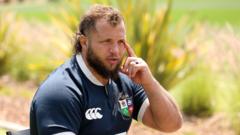Is Andy Lee's Do Not Watch This Show His Toughest Creative Challenge?
Andy Lee: From Best-Selling Kids' Author to Television Show Creator
In the ever-evolving landscape of media, Andy Lee is a name that resonates with audiences across multiple platforms. With a diverse portfolio that includes successful TV shows, engaging radio programs, popular podcasts, and best-selling books, Lee has established himself as a versatile entertainer. However, his latest venture—transforming his best-selling children's book into a television show for the ABC—has proven to be a unique and challenging process, unlike any he has encountered before. This article delves into Andy Lee's journey, shedding light on his creative process, the challenges faced, and the insights gained from this transformative experience.
Who is Andy Lee?
Andy Lee is an Australian comedian, radio host, television presenter, and author. Born on May 24, 1981, he first gained fame as part of the comedy duo Hamish & Andy, alongside his long-time friend Hamish Blake. The duo's chemistry and humor quickly won over audiences, leading to a series of successful television shows, radio programs, and podcasts. Lee’s knack for engaging storytelling and ability to connect with people has been a critical factor in his ongoing popularity.
The Shift to Children's Literature
In recent years, Lee ventured into the world of children's literature with his book "Do Not Open This Book," which quickly became a best-seller. The book’s blend of humor and interactive storytelling captivated both children and parents alike, making it a staple in many households. This success paved the way for the opportunity to adapt the beloved story into a television series.
The Journey of Adaptation
Adapting a book into a television show involves a multitude of steps, each presenting its unique set of challenges. For Andy Lee, this process was both exciting and daunting. Here are some key phases of his journey:
1. Concept Development
The first step in adapting his book came with conceptualizing how to translate the interactive elements of the story into a visual format. Lee wanted to maintain the book's essence while also embracing the creative possibilities that television offers. This meant brainstorming new ideas, potential episodes, and how to engage young viewers in a way that mirrors the book's interactivity.
2. Collaborating with Creatives
Lee assembled a talented team of writers, directors, and producers who shared his vision. Collaboration was key; he needed to ensure that everyone's creative input aligned with the original spirit of the book. This phase involved numerous meetings, brainstorming sessions, and a lot of trial and error. Lee notes that collaborating with experienced professionals in television production was both enlightening and humbling.
3. Script Writing
Once the concept was solidified, the next step was writing the scripts. This process required distilling the book's narrative into engaging episodes. Each script needed to capture the humor and heart of the original text while also being suitable for a television format. Lee found this part of the process particularly rewarding, as it allowed him to explore new narratives and themes that could resonate with children.
4. Casting and Production
With scripts in hand, the focus shifted to casting the right actors who could bring the characters to life. Lee understood the importance of selecting a cast that could connect with young audiences while also delivering the comedic elements inherent in the story. Once the cast was finalized, production commenced, bringing the project to life on screen.
5. Navigating Challenges
Throughout this adaptation process, Lee faced numerous challenges. From budget constraints to creative differences, each hurdle required adaptability and problem-solving skills. Lee emphasizes the importance of resilience and open-mindedness in overcoming obstacles, reminding aspiring creators that setbacks are part of the journey.
The Impact of the Adaptation
The transition from page to screen not only broadens the reach of Lee's story but also introduces the narrative to a new generation of children. Television has a powerful influence on young minds, and Lee is keenly aware of the responsibility that comes with it. He strives to create content that is not only entertaining but also educational, promoting positive values such as kindness, curiosity, and creativity.
Engaging Young Audiences
One of the primary goals of the television adaptation is to engage young viewers in a meaningful way. Lee has incorporated interactive elements in the show, similar to those found in the book, encouraging children to think critically and participate actively. This approach helps foster a love for storytelling and reading, which is essential in a digital age where screens dominate attention.
Lessons Learned from the Experience
As Lee reflects on his journey from author to TV creator, several key lessons emerge:
- The Importance of Flexibility: Adaptation requires flexibility. What works in a book may not always work on screen, and being open to change is crucial.
- Collaboration is Key: Engaging with a diverse team of creatives leads to richer storytelling. Each person's perspective can enhance the final product.
- Listening to the Audience: Understanding the target audience—children and their parents—is essential in creating relatable and enjoyable content.
- Stay True to the Core Message: While adaptations may require changes, retaining the original message and spirit of the story is vital.
Looking Ahead
With the television show set to air soon, Andy Lee looks forward to sharing his story with a broader audience. He is excited about the potential impact his work can have on children's lives and the conversations it may spark among families. The journey has not only been about creating a show but fostering a community around storytelling and imagination.
Future Projects
Lee is also contemplating future projects beyond this adaptation. With his passion for storytelling, it's likely that he will continue exploring new formats and ideas that challenge conventional narratives. Fans can anticipate more engaging content that continues to bridge the gap between literature and visual media.
Conclusion
Andy Lee’s journey from a best-selling kids' author to a television creator illustrates the dynamic nature of storytelling across various platforms. The process of adaptation, filled with challenges and creative exploration, ultimately leads to a richer narrative experience for audiences. As Lee prepares to unveil this new chapter of his artistic career, it’s clear that his love for storytelling will continue to shine through, captivating the hearts and minds of children everywhere.
FAQs
What inspired Andy Lee to write children's books?
Andy Lee's inspiration for writing children's books stemmed from his desire to engage young readers with humor and interactive storytelling. He aims to foster a love for reading in children through entertaining narratives.
How does Andy Lee ensure his TV show is suitable for children?
Lee collaborates with child development experts and educators to ensure that the content is age-appropriate, engaging, and promotes positive values among young viewers.
What can viewers expect from the adaptation of the book into a TV show?
Viewers can expect a vibrant and engaging adaptation that maintains the humor and interactivity of the book while introducing new characters and storylines that resonate with children.
As Andy Lee continues to innovate and inspire, one must wonder: what other stories await us in his creative journey? #AndyLee #ChildrensLiterature #TVAdaptation
Published: 2025-07-04 00:42:26 | Category: Uncategorized



